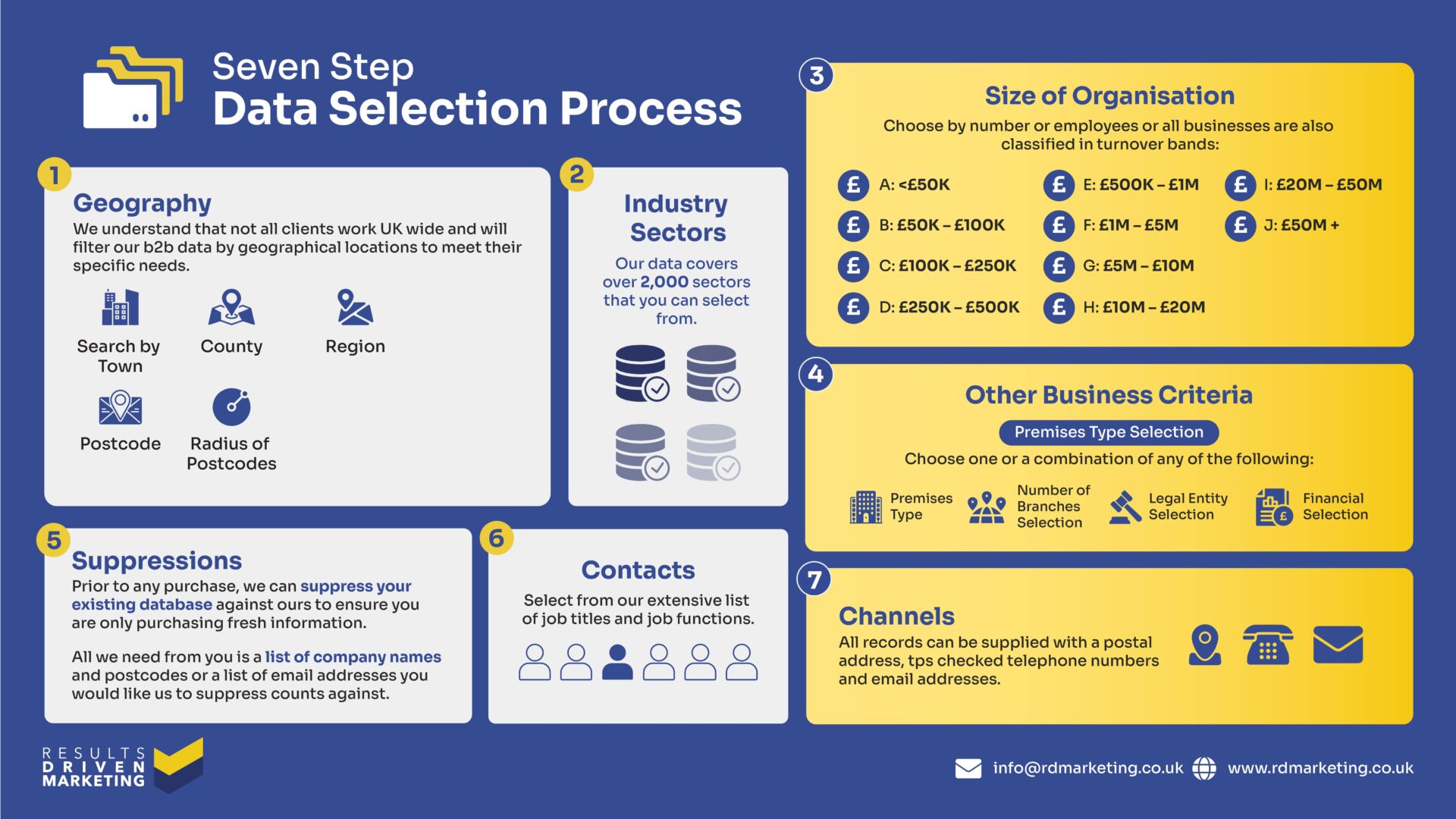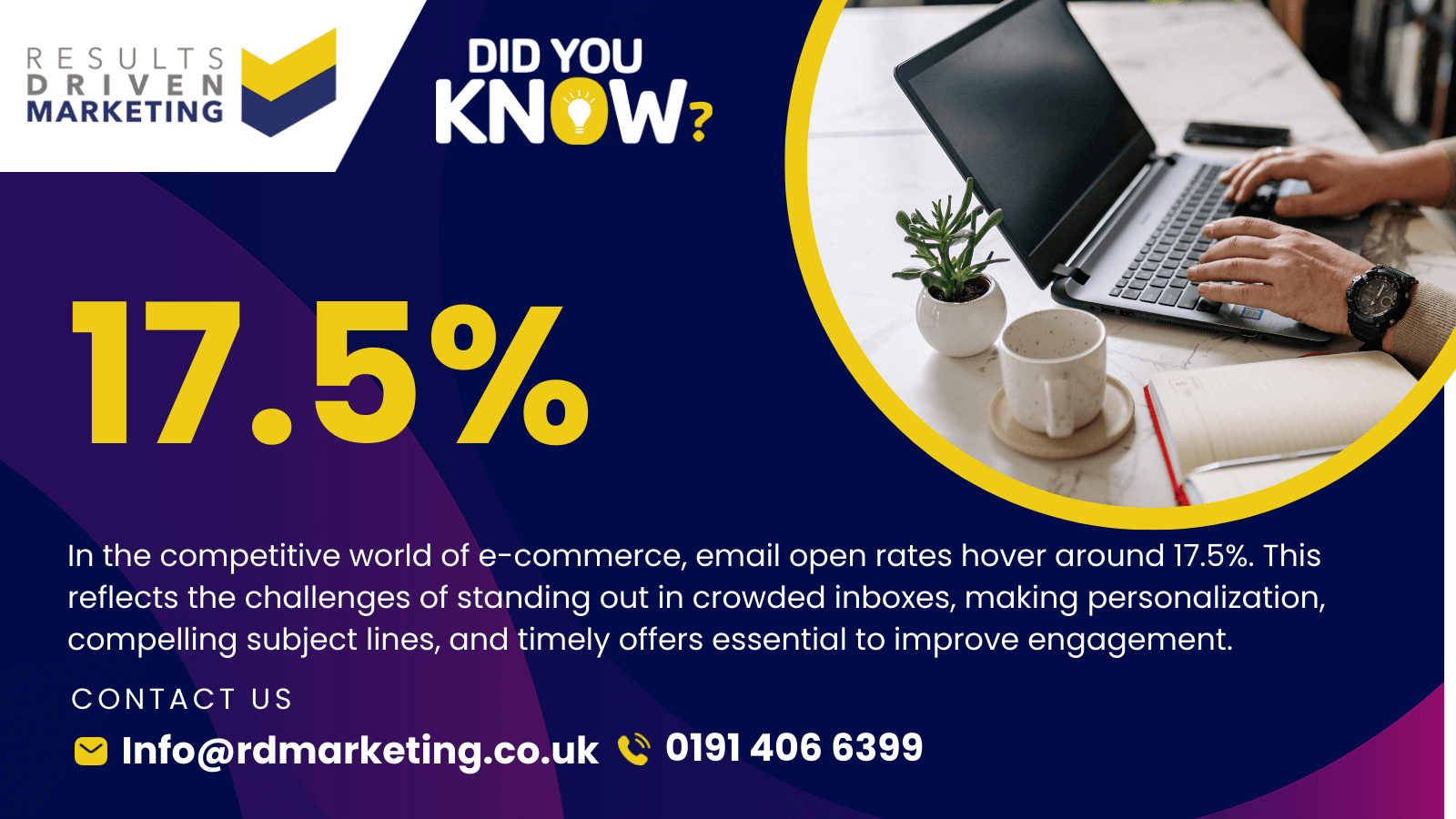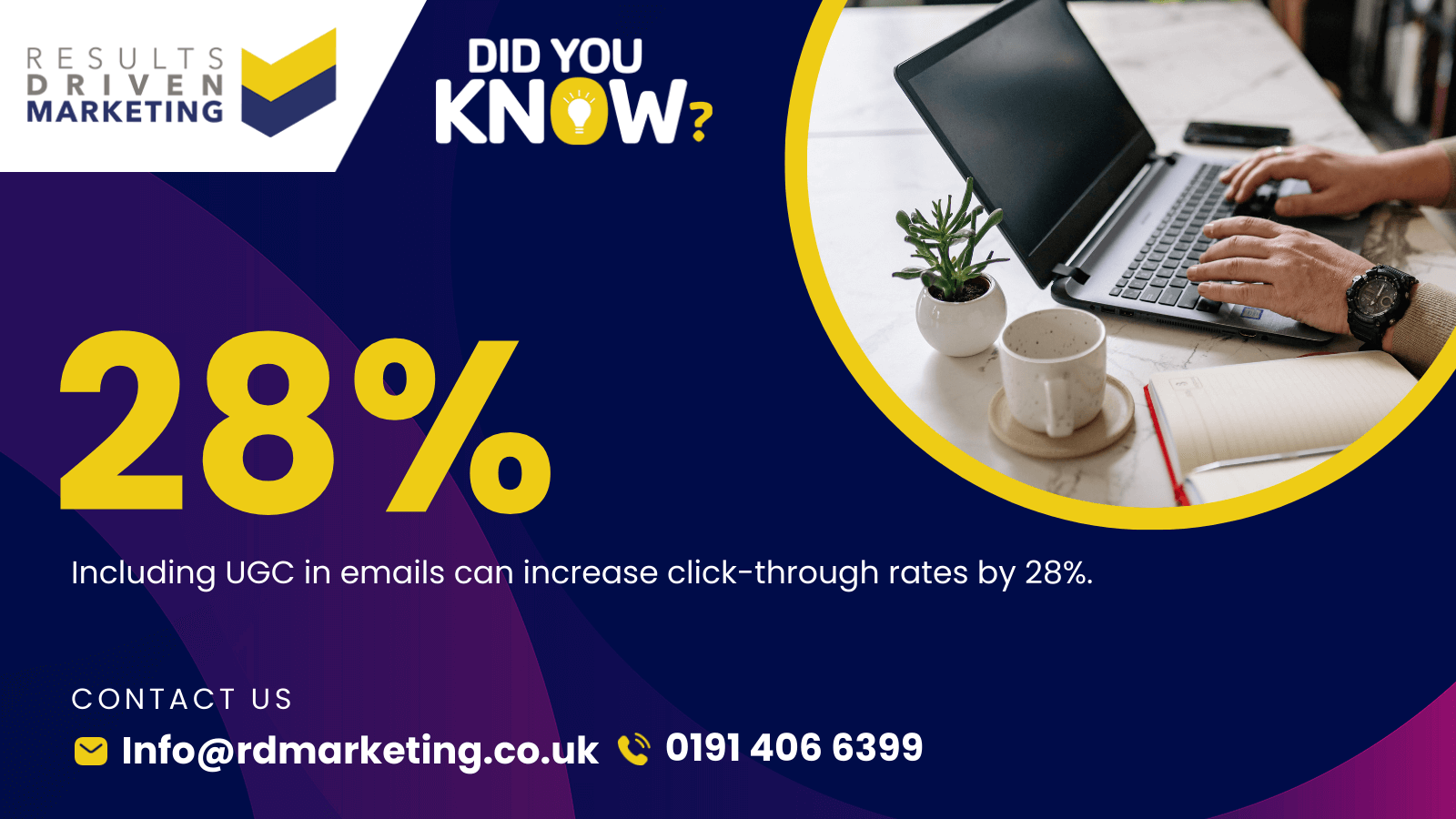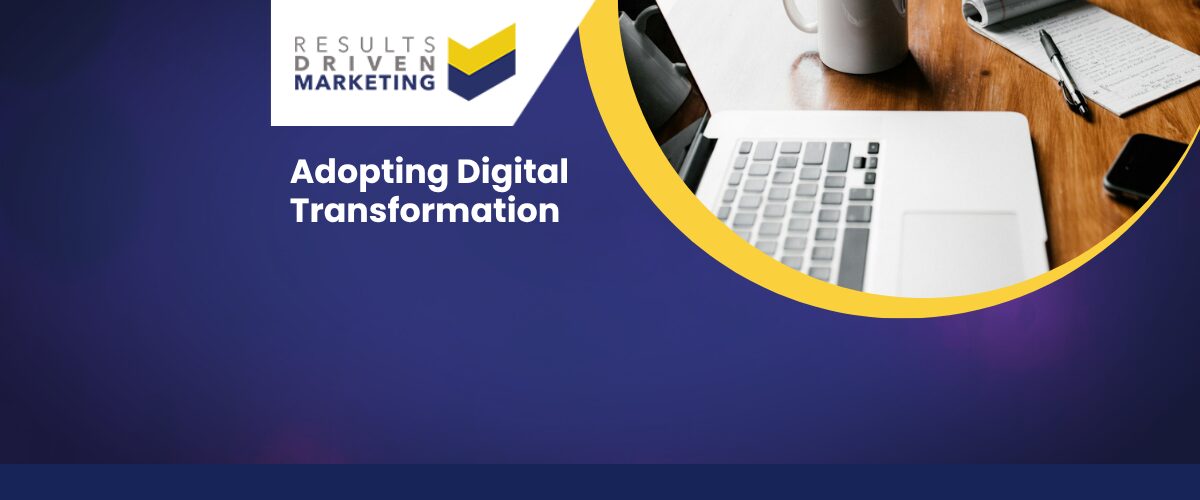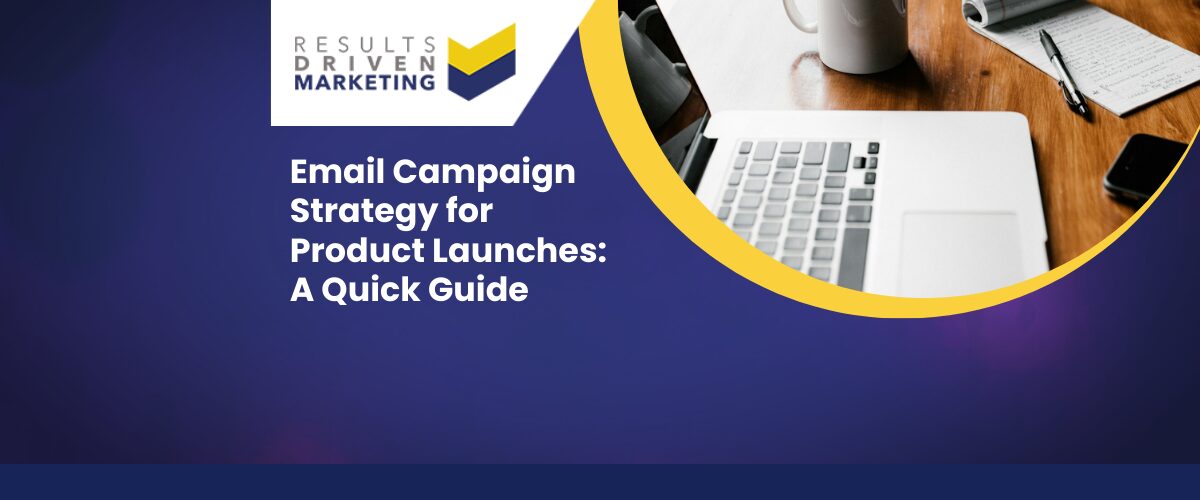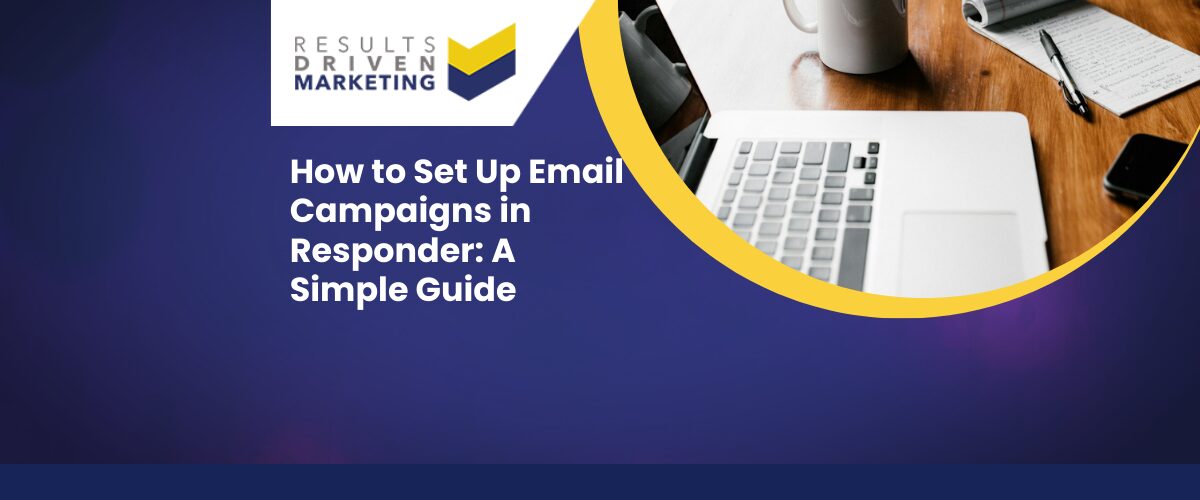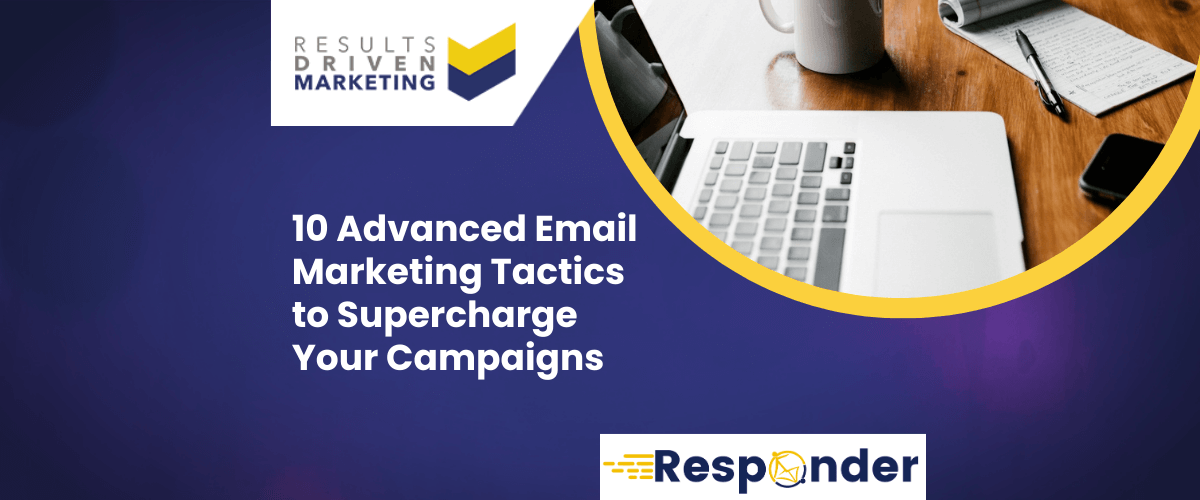
10 Advanced Email Marketing Tactics to Supercharge Your Campaigns
Advanced email marketing has come a long way since its early days. What began as simple promotional blasts has evolved into highly targeted, data-driven campaigns that connect with customers on a deeper level.
It’s no longer just a tool for reaching people—it’s now essential for boosting engagement, driving conversions, and building customer loyalty. As technology advances and customer expectations grow, these sophisticated tactics have become more vital than ever for successful marketing.
The competition in today’s digital landscape is intense. Every business is vying for a spot in the consumer’s inbox, making it crucial for brands to step up their email marketing strategies.
But here’s the challenge: traditional, generic email tactics don’t cut it anymore. With crowded inboxes and sophisticated spam filters, it takes something extra—something advanced—to ensure that your emails get noticed, opened, and acted upon.
Ultimately, advanced email marketing is all about elevating your strategy to align with the evolving needs of your audience.
Using insights from Consumer Data or an International Email List can help you refine your approach, making sure each message adds value to the recipient.
This approach not only drives better results but also creates a foundation for lasting customer relationships.
Table of contents:
Tactic #1: Personalisation Beyond First Names
Personalisation in email marketing has evolved far beyond the simple “Hello, [First Name]!” approach. To truly stand out, you need to create content that speaks directly to each recipient’s unique needs, behaviors, and preferences. This is where advanced email marketing really shines.
With access to behavioral data, purchase history, and individual preferences, you can go beyond basic personalisation to craft messages that resonate deeply with each subscriber.
For example, rather than sending the same promotional email to your entire list, you can segment your audience into specific groups based on their browsing activity, purchase history, or even geographic location.
Going Deeper with Behavioral Data
Behavioral data is the foundation of advanced personalisation. By analysing past actions, like how frequently a customer visits your website or which products they viewed, you can create highly relevant email content that drives better engagement.
Consider using B2B Data to refine your segmentation and ensure each email speaks directly to the recipient’s interests. A quality source for B2B Data can provide the insights needed for these in-depth, behavior-based strategies.
With a behavioral-based approach, you can:
- Target Browsing Interests: If a customer frequently views specific categories on your website, send emails showcasing new or popular items in those categories.
- Engage with Abandoned Carts: For customers who leave items in their cart without purchasing, trigger automated emails with reminders or special offers to encourage completion of the purchase.
- Build Loyalty with Post-Purchase Engagement: Use post-purchase behavior to suggest complementary products or to invite them to review their purchase, boosting customer loyalty and engagement.
Using Purchase History and Preferences for Targeting
Incorporating purchase history is another key to advanced email marketing personalisation. If a customer bought a specific product, you could follow up with an email that recommends related products or accessories.
This tactic works especially well for e-commerce businesses or subscription services, where there’s an opportunity to re-engage with previous buyers.
For instance, if a customer purchased outdoor gear, a follow-up email could showcase the latest seasonal options, enhancing relevance and engagement.
Email Address List Data from reliable sources like our Email Address List Data service can support these personalised campaigns by ensuring that the contact information is up-to-date and segmented effectively.
Implementing Advanced Segmentation and Targeting
Once you have the data, the next step is to implement advanced segmentation strategies.
Effective segmentation allows you to create groups within your email list that share common characteristics, making your campaigns more targeted and effective.
Here’s a step-by-step approach to advanced segmentation:
Identify Key Segments: Start by analysing your audience to identify specific segments, such as new customers, repeat buyers, or customers who haven’t purchased recently.
Leverage Data Enrichment Services: Adding data from external sources, like our Data Enrichment Services, can enhance what you know about each customer, giving you more fields to base your segments on.
Create Targeted Content: Design emails that specifically speak to each segment. For instance, new customers might receive welcome emails, while loyal customers could get exclusive offers.
Automate Where Possible: Use automation tools to deliver these personalised messages at the right time, such as sending a discount offer to a new customer or a product recommendation based on recent views.
By taking advantage of Consumer Data and tools for Telemarketing Data, your campaigns can become even more relevant, helping to increase open rates and conversions by targeting customers with the content they’re most likely to engage with.
Tactic #2: Dynamic Content and Real-Time Updates
One of the most impactful ways to engage subscribers is through dynamic content and real-time updates in your email campaigns.
With advanced email marketing, static messages are a thing of the past. Today, emails can change based on user behavior or even adjust in real time, making your campaigns more timely, relevant, and compelling.
Dynamic content allows you to display elements that adapt to each user’s actions or interests.
It could be something as simple as displaying different products based on browsing history or as complex as showcasing location-specific content. This approach helps deliver a hyper-relevant experience to each recipient, increasing engagement rates and conversions.
How Dynamic Content Works in Advanced Email Marketing
Dynamic content is any element in your email that automatically adjusts according to user data or preferences. It might include:
- Live Pricing Updates: For e-commerce brands, showcasing current prices, sales, or discounts can prompt quicker decisions. For instance, if a recipient revisits a product page multiple times, sending an email with the latest price or any price drops can encourage them to buy.
- Countdown Timers: Countdown timers are great for creating a sense of urgency, particularly during limited-time offers or events. When recipients see that an offer is about to expire, they’re more likely to take action. For instance, brands like Amazon use this strategy effectively by embedding countdowns during their flash sales.
Using quality B2B Data can further enhance dynamic content by allowing you to pull in specific user information, making each email feel individually crafted.
With access to data from our B2B Data services, marketers can ensure that dynamic content is based on accurate and up-to-date user profiles.
Real-Time Updates: Why They Matter
With real-time updates, you can adjust content on the fly, ensuring that emails remain accurate even after they’ve been sent. This is particularly useful for:
- Inventory Updates: Displaying live product availability can prevent disappointment if an item is out of stock and, at the same time, encourage quicker purchases for products with limited stock.
- Location-Based Offers: For companies with multiple locations or region-specific events, real-time updates can showcase the nearest store or event details based on the recipient’s location.
Integrating these advanced email marketing techniques, however, requires robust data and sophisticated email platforms.
With the support of our Email Marketing Management Services, you can manage and automate real-time updates in your campaigns efficiently, ensuring each email stays fresh and relevant.
Getting Started with Dynamic Content
To incorporate dynamic content and real-time updates in your email marketing, here’s a quick step-by-step guide:
Gather Accurate User Data: Start with reliable and clean data. Our Data Cleansing Services can help ensure your data is accurate, removing inactive or outdated contacts to keep your lists clean and actionable.
Use a Dynamic Content-Enabled Platform: Choose an email platform that supports dynamic content, allowing you to add real-time updates, such as countdowns or live stock status.
Define Triggers: Set up triggers for each piece of dynamic content, such as location, browsing history, or time of day, to ensure content adjusts as needed.
Test and Optimise: Make sure each dynamic element displays correctly across devices and email clients, as display issues could detract from the recipient’s experience.
By incorporating these steps, you’ll be well on your way to a more responsive, adaptive, and advanced email marketing strategy.
And for any assistance along the way, feel free to explore our Data Enrichment Services at RD Marketing, where we help you get the most out of your customer data to create truly dynamic, engaging campaigns.
Tactic #3: Leveraging AI and Predictive Analytics
In the world of advanced email marketing, artificial intelligence (AI) and predictive analytics have become game-changers. They offer marketers powerful tools to make smarter, data-driven decisions that can optimise every aspect of a campaign.
From choosing the perfect timing to crafting irresistible subject lines, AI-driven insights allow brands to deliver more relevant and impactful messages, increasing open rates and conversions.
With AI, you’re no longer guessing about what works and what doesn’t. Instead, you’re leveraging advanced technology to drive each decision, making your emails more likely to stand out and connect with recipients.
Let’s look at how you can use AI and predictive analytics in advanced email marketing to engage users more effectively.
Optimising Email Timing
One of the biggest advantages of AI in advanced email marketing is the ability to pinpoint the ideal time to reach each subscriber. AI algorithms can analyse patterns in user behavior, such as when they typically check their emails or when they’re most active online, to suggest the best time to send.
This level of timing optimisation isn’t just guesswork; it’s based on data from each user’s unique activity, ensuring your emails arrive when they’re most likely to be opened.
For instance, our Email Marketing Management Services enable users to automate timing based on AI insights, ensuring that each email lands in the inbox at the perfect moment for maximum visibility. This tactic helps boost open rates and can significantly improve engagement metrics.
Crafting Subject Lines with AI Insights
Subject lines play a crucial role in determining whether or not your email gets opened. AI-driven tools can analyse past campaign performance, evaluating which subject lines drove the best results and which words or phrases resonate with your audience.
With AI, you can receive real-time suggestions on subject lines likely to perform well based on factors like word choice, length, and sentiment.
Moreover, predictive analytics can help refine subject lines further by taking individual preferences into account. By personalising these lines to reflect user interests, AI helps create an emotional connection with each recipient from the very first glance.
Advanced email marketing that uses AI-driven subject lines can be more targeted, reducing the guesswork and helping you stand out in crowded inboxes.
Predictive Analytics for Content Personalisation
Predictive analytics goes beyond simple segmentation by enabling marketers to predict what each subscriber might want next based on their past behavior.
This means if a user has shown interest in certain products, predictive analytics can identify patterns and recommend other items likely to appeal to them.
For instance, if someone has recently bought hiking gear, a follow-up email with related outdoor accessories or travel tips can feel incredibly personalised.
This level of personalisation is only possible when you have clean, high-quality data to support your insights.
That’s where services like our Data Cleansing Services and Data Enrichment Services come in, ensuring that you’re working with accurate information for every campaign. Clean data means reliable predictions, resulting in content that aligns more closely with user needs.
How to Get Started with AI and Predictive Analytics in Your Campaigns
Getting started with AI and predictive analytics may sound complex, but with the right approach, it can be incredibly manageable. Here’s a simple, step-by-step guide:
Choose the Right AI-Enabled Platform: Many email marketing platforms now come with built-in AI capabilities. Look for a platform that supports predictive analytics, so you can start implementing insights from the get-go.
Work with Reliable Data Sources: Use clean, up-to-date B2B Data or Consumer Data to fuel your campaigns. Remember, accurate data is essential for effective AI-driven personalisation.
Set Up Predictive Models: Once your data is ready, set up predictive models to analyse user behavior and forecast future actions. This can help you anticipate needs and target content accordingly.
Test and Refine: AI thrives on feedback. Monitor the performance of your AI-driven campaigns and make adjustments based on what the data reveals. Over time, your AI models will become more refined, delivering even better results.
By combining AI and predictive analytics, advanced email marketing moves from a one-size-fits-all approach to one that feels uniquely tailored to each recipient.
This strategy can drive exceptional results, making your emails relevant, timely, and, above all, effective in engaging your audience.
For further assistance with the right tools and insights to support your advanced email marketing, explore our Email Address List Data and Direct Mail Data services at RD Marketing.
With these resources, you’ll have a strong foundation to make data-driven, AI-optimised decisions that elevate your email marketing campaigns.
Tactic #4: Interactive Elements in Emails
One of the most exciting advances in email marketing today is the use of interactive elements. Interactive content invites recipients to engage directly with the email, making the experience more memorable and, ultimately, more effective.
By adding interactive elements such as surveys, polls, image carousels, and even embedded quizzes, marketers can create a two-way communication channel with their audience, leading to higher engagement rates and a more personalised experience.
Why Interactivity Matters in Advanced Email Marketing
Adding interactivity to your emails isn’t just about looking flashy; it’s about creating meaningful engagement.
When recipients can click, scroll, and interact within an email, they’re more likely to remember the message and follow through with the call-to-action.
This approach is highly effective for generating feedback, driving conversions, and building loyalty because it makes the audience feel involved.
Some benefits of using interactive content in advanced email marketing include:
- Enhanced Engagement: Interactive elements capture the reader’s attention, making them more likely to read through the entire email.
- Increased Click-Through Rates: By encouraging participation, such as voting in a poll or viewing a product carousel, recipients are naturally more likely to engage with other links in the email.
- Immediate Feedback: Surveys and polls give marketers quick insights into customer preferences, allowing them to adjust strategies on the go.
Using B2B Data can further enrich your interactive elements by targeting content based on industry-specific interests.
If you’re looking for reliable B2B insights, our B2B Data services can help you fine-tune audience segmentation for maximum relevance.
Types of Interactive Elements for Advanced Email Marketing
There are a few go-to types of interactive content that consistently deliver high engagement rates. Let’s explore each of these, along with examples of how to implement them:
Surveys and Polls
- Surveys: Including a quick survey or poll within an email can give you insights into customer preferences. For instance, after a purchase, you could ask customers to rate their experience or tell you what they’d like to see in future products.
- Polls: For a lighter interaction, polls allow users to click a single answer option, offering immediate feedback. For example, an email might ask, “Which new product would you like to see next?” with clickable options that track responses in real time.
Companies that use Telemarketing Data often incorporate follow-up surveys in their emails to understand customer satisfaction or service preferences. Our Telemarketing Data services can support this approach, giving you valuable insights for shaping future campaigns.
Image Carousels
-
- Carousels allow users to swipe through images, providing a more immersive experience. For instance, an e-commerce brand might showcase multiple products, allowing users to scroll through each one directly in the email. This tactic is perfect for showing off product ranges, travel packages, or featured blog content.
- Carousels work exceptionally well in Direct Mail Data campaigns to showcase diverse offerings, and with our Direct Mail Data services, you can refine your audience to ensure the right message reaches the right people.
Embedded Quizzes
-
- Quizzes are a fun way to engage readers while gathering information about their preferences. For example, a skincare brand could include a quiz like “Find Your Ideal Skin Routine,” with each question helping personalise product recommendations.
- Quizzes can also lead readers to relevant content or products on your website, making them a valuable part of any advanced email marketing strategy. By connecting with Consumer Data, you can personalise quiz options to reflect the interests and needs of specific segments.
As well as….
Countdown Timers
-
- A countdown timer in an email adds a sense of urgency. Whether promoting a sale, a limited-time offer, or an upcoming event, countdown timers visually encourage recipients to take action before time runs out.
- Brands like fashion retailers often use countdowns to emphasise flash sales, and they can work particularly well in International Email List campaigns to align with local sales events. Explore our International Email List services for global marketing opportunities.
How to Get Started with Interactive Elements in Advanced Email Marketing
Adding interactive elements doesn’t have to be complicated. Here’s a quick guide on how to get started:
Choose Your Interactive Feature: Decide on the type of interaction that fits your campaign goal, whether it’s a survey, carousel, or countdown.
Select a Platform that Supports Interactivity: Not all email platforms support advanced interactive features. Look for platforms that offer drag-and-drop interactivity or integrations with interactive plugins. Our Email Marketing Management Services can help manage these features efficiently.
Design with Simplicity in Mind: Ensure the interactive elements are straightforward to use and don’t overwhelm the reader. Too many interactions can distract from the main message.
Track Engagement and Optimise: Measure how users interact with each feature and use that data to optimise future campaigns. For example, if you notice higher engagement with carousels than quizzes, you may choose to focus more on showcasing visual content in future emails.
Interactive elements are a surefire way to make emails stand out, keeping readers engaged and encouraging them to participate directly.
For reliable data and support in implementing advanced email marketing tactics, explore our range of services at RD Marketing, where we offer everything from CTPS Checker to Data Enrichment Services for comprehensive marketing solutions.
Tactic #5: Advanced A/B and Multivariate Testing
When it comes to advanced email marketing, continuous testing is essential. While many marketers are familiar with basic A/B testing, advanced strategies involve a more in-depth approach, examining not just subject lines but a variety of factors, from timing to design and content variations.
This level of testing allows you to optimise each part of your email, leading to more effective campaigns that truly resonate with your audience.
Why Advanced Testing Matters in Email Marketing
A/B and multivariate testing offer insights that go beyond general assumptions, enabling marketers to understand what works best with their audience.
The beauty of these tests lies in their ability to reveal which specific elements have the biggest impact on open rates, click-through rates, and conversions.
With a Direct Mail Data or Email Address List Data foundation, you can conduct targeted A/B testing across different segments to determine what resonates with each audience group.
For example, our Direct Mail Data and Email Address List Data services help marketers refine their testing by ensuring they’re reaching the right people with each variation.
Key Elements to Test Beyond Subject Lines
When it comes to advanced email marketing, don’t stop at testing subject lines. Here are some essential elements to consider:
Content Variations
-
- Test different content styles to determine what resonates best with your audience. For instance, try one version with a personal story or testimonial and another with a more straightforward, product-focused approach.
- Product Layouts: Try different product arrangement styles, like grids versus lists, to see which format drives the most engagement.
Design Elements
-
- Color Schemes and Button Styles: Test variations in color schemes, especially for call-to-action buttons, to see what catches the eye and encourages clicks.
- Image Choices: Try using different types of visuals (e.g., people using the product vs. product-only images) to identify what works best.
Timing and Frequency
-
- The timing of your email can significantly affect open rates. Test sending emails at various times and days of the week to determine when your audience is most likely to engage.
- Frequency Testing: Experiment with how often you send emails. Finding the perfect balance between too few and too many emails can have a major impact on engagement.
Incorporating Telemarketing Data can support timing optimisation as it provides additional insights into when your audience is most active. You can find more about Telemarketing Data to enhance timing and frequency testing for specific segments.
How to Conduct Advanced A/B and Multivariate Testing
Advanced A/B and multivariate testing requires a strategic approach. Here’s a step-by-step guide to help you get started:
Identify Goals for Each Test
-
- Decide on what you want to improve, such as open rates, click-through rates, or conversions. This clarity will help you focus on which elements to test and which variations to prioritise.
Create Test Variations
-
- For A/B testing, stick with one variable at a time (like changing the subject line). However, with multivariate testing, you can test multiple elements, such as combining different content and design changes.
- Using a Consumer Data-rich list, like our Consumer Data services, can help further refine variations by targeting different demographics for a more granular view of preferences.
Run Tests on Segmented Audiences
-
- If your email list is large enough, split it into segments for each test variation. This allows you to get a clear picture of what works best for different audience groups without skewing your results.
- A segmented approach ensures that test outcomes aren’t influenced by group differences, offering more reliable insights.
Analyse Results and Implement Changes
-
- Once you have enough data, analyse your findings to identify clear winners. Did one design receive more clicks? Did a particular content style yield higher conversions?
- Integrate these insights into your future emails, continuously refining your campaigns for optimal results.
Best Practices for Continuous Testing
To get the most out of advanced email marketing, it’s crucial to keep testing as an ongoing process. Here are a few best practices to consider:
- Avoid Testing Too Many Variables at Once: While multivariate testing allows for multiple elements, avoid overloading with too many changes in a single test to keep results clear and actionable.
- Keep Data Clean and Reliable: Testing relies on accurate data. By maintaining clean email lists with our Data Cleansing Services, you ensure each test reflects true audience preferences.
- Update Test Strategies Based on Findings: Regularly revisit your testing strategies. If your audience’s preferences change, adjust your testing approach accordingly.
Testing is a cornerstone of advanced email marketing, allowing brands to refine their campaigns based on hard data rather than assumptions.
With A/B and multivariate testing, you can continuously fine-tune your approach, making each email more targeted and impactful.
Tactic #6: Incorporating User-Generated Content (UGC)
User-generated content, or UGC, has become one of the most effective tools in advanced email marketing. Leveraging UGC in your campaigns adds a layer of authenticity that traditional marketing content can’t always achieve.
When customers see real people—like themselves—using and enjoying your products, it builds trust and encourages engagement.
Incorporating UGC effectively within emails boosts credibility, strengthens brand loyalty, and often leads to higher engagement rates.
Whether it’s photos, testimonials, reviews, or social media shoutouts, UGC can transform a regular email into a powerful social proof-driven message.
The Power of UGC in Advanced Email Marketing
Using UGC taps into the social proof phenomenon, where people are more likely to trust a product or service if they see others endorsing it.
This form of content appeals to customers’ natural desire for authenticity, making them feel more connected to the brand.
Benefits of incorporating UGC include:
- Increased Credibility: UGC provides a real-world perspective, helping to alleviate any skepticism potential customers may have. It feels genuine and relatable, which builds trust.
- Boosted Engagement Rates: Emails with UGC, like testimonials or user images, often have higher open and click-through rates because they feel more personal and relatable.
- Enhanced Brand Loyalty: When customers feel like they’re part of a community, they’re more likely to stay loyal to the brand. By showcasing user stories, brands make their customers feel valued, strengthening that bond.
To make UGC truly effective, start by building a solid base of Consumer Data. Our Consumer Data services can help identify customers who are most likely to engage with your content, increasing the chances of generating impactful UGC for your campaigns.
How to Gather User-Generated Content
Collecting quality UGC doesn’t have to be complicated. Here are some ways to encourage customers to share content for your email marketing campaigns:
Social Media Hashtags: Create a branded hashtag that customers can use when posting about your products. Encourage them to share their experiences on social media, and then repurpose those posts in your emails.
Email Contests and Challenges: Launch an email campaign inviting customers to participate in a challenge or contest, like “Share Your Best Product Moment.” Not only does this generate UGC, but it also drives customer engagement.
Post-Purchase Requests: Following a purchase, send an email asking for feedback, reviews, or photos of the product in use. A simple “Show us how you use [product]!” can generate plenty of content. To ensure these requests reach the right customers, consider using a reliable Email Address List Data source like our Email Address List Data service to keep your contacts organised and accurate.
Loyalty Program Incentives: Offer rewards or incentives for customers who provide testimonials, reviews, or images. Many brands find success by giving discounts or loyalty points to customers who contribute content.
Integrating UGC into Your Advanced Email Marketing Campaigns
Once you’ve gathered user-generated content, the next step is to incorporate it effectively within your emails. Here’s a step-by-step guide:
Select the Best Content: Choose UGC that aligns with your brand values and campaign goals. For instance, select images that reflect the lifestyle your brand promotes, or feature reviews that highlight key product benefits.
Feature User Photos and Videos: Use photos or short video clips of real customers interacting with your product. Position these visuals prominently to capture attention.
For instance, if you’re promoting international products, use UGC collected through an International Email List. Our International Email List service helps you reach a global audience, expanding your UGC reach.
Showcase Customer Testimonials: Incorporate customer reviews or testimonials as quotes, either as a main content element or a supportive section. A compelling review from a happy customer can speak volumes to prospective buyers.
Combine UGC with Calls-to-Action: Make it easy for readers to take the next step after engaging with UGC. If a user photo is showcased, add a “Shop the Look” button or a direct link to the featured product.
Our Email Marketing Management Services can help automate these types of responsive emails, allowing you to effortlessly feature UGC with actionable CTAs.
Regularly Refresh Content: Keep the UGC in your campaigns up to date. Rotate in fresh user content periodically to ensure your emails remain relevant and interesting to your audience.
Best Practices for UGC in Advanced Email Marketing
When incorporating UGC into your emails, keep the following tips in mind:
- Obtain Permissions: Always ask for permission before using someone’s photo, video, or testimonial. Most customers are excited to be featured, but obtaining consent is essential.
- Maintain High Quality: Select high-quality visuals and reviews that reflect positively on your brand. Blurry images or poorly written testimonials can detract from the professionalism of your email.
- Optimise for Mobile: Since many users will view your emails on mobile, ensure that UGC displays well across all devices. Use our Data Cleansing Services to keep your list clean and responsive, avoiding potential issues with mobile optimisation.
By incorporating UGC into your advanced email marketing strategy, you’re adding an authentic, community-driven element that resonates with recipients.
For comprehensive data solutions to support this approach, check out our services at RD Marketing, where we offer everything from B2B Data insights to CTPS Checker tools for streamlined, compliant marketing.
Tactic #7: Optimising for Dark Mode
As digital consumption habits evolve, dark mode has emerged as a popular choice for users across devices.
More people are opting for dark mode on their email clients and mobile devices due to its appealing aesthetics, reduced eye strain, and potential battery savings on OLED screens.
For advanced email marketing, this trend presents both a design challenge and an opportunity. By optimising emails for dark mode, you ensure your content looks polished and visually appealing, no matter the recipient’s preference.
Why Dark Mode Optimisation Matters in Advanced Email Marketing
When emails aren’t optimised for dark mode, recipients might experience visual issues, such as logos disappearing, colors clashing, or text becoming unreadable.
This can lead to a poor user experience and might even result in unsubscribes.
As dark mode becomes increasingly popular, optimising your email designs for both light and dark viewing modes is essential for delivering a professional experience that reflects positively on your brand.
Key Design Tips for Dark Mode Optimisation
Optimising emails for dark mode requires a few key design adjustments. Here’s how to ensure your email content looks crisp and effective, regardless of the recipient’s settings:
Use Transparent PNGs for Logos and Images
-
- Transparent PNGs ensure that logos and icons appear correctly on both light and dark backgrounds. This prevents unwanted white boxes from appearing around images in dark mode.
- Try to test your images in different modes to confirm that they maintain their quality and readability in both themes.
Consider Color Choices Carefully
-
- Bright colors that look great in light mode may not appear well on dark backgrounds. Use colors that are versatile and adjust well to both settings. Shades that are too light might be hard to read in dark mode, while darker shades may blend into a dark background.
- If you’re working with highly specific color themes for targeted campaigns, such as Direct Mail Data or International Email Lists campaigns, consider our Direct Mail Data services and International Email List options for data-backed insights to support targeted color palettes that enhance your brand’s visual appeal across themes.
Use Dark Mode-Specific CSS
-
- Some email platforms allow for dark mode-specific CSS, which lets you specify color adjustments depending on the mode. This advanced email marketing technique can ensure that text and background colors adapt as necessary.
- If you’re already using CSS for personalisation within your email campaigns, adding dark mode customisation can be a natural extension of your strategy.
As well as….
Test Text Colors for Readability
-
- Black or dark text on dark backgrounds can disappear, just as white text on light backgrounds can become invisible. For a versatile approach, try using mid-tone grays for text that will look good in both modes.
- For text-heavy campaigns, leveraging clean, readable fonts and optimised text colors will ensure your audience can comfortably engage with your message. Using tools like our Data Cleansing Services to maintain a clean and accurate list can further enhance your targeting and personalisation.
Adjust CTA Button Styles
-
- Ensure your call-to-action (CTA) buttons are highly visible in both light and dark modes. Darker buttons might work well on light backgrounds but can disappear on dark ones. To counter this, consider outlining your buttons or using bold colors that contrast well with both backgrounds.
- For campaigns targeting specific segments with CTAs tailored to each audience group, our B2B Data insights can support customised CTA strategies that drive higher engagement.
Tactic #8: Advanced Deliverability Techniques
In advanced email marketing, achieving high deliverability is critical. Even the most perfectly crafted emails mean nothing if they don’t land in the inbox.
Advanced deliverability techniques can help ensure your emails reach their intended audience, bypassing spam filters and maintaining a positive sender reputation.
To maximise deliverability, it’s essential to focus on email authentication, list hygiene, and managing your sender reputation effectively.
Essential Techniques for Improving Email Deliverability
Let’s explore some of the best techniques for improving deliverability rates, ensuring your emails land in your subscribers’ inboxes and aren’t trapped in spam folders.
Implementing Email Authentication
-
- Authentication protocols like SPF (Sender Policy Framework), DKIM (DomainKeys Identified Mail), and DMARC (Domain-based Message Authentication, Reporting, and Conformance) are crucial for email security and deliverability. They verify that your emails are legitimate, helping email service providers (ESPs) recognise your emails as trustworthy and reducing the risk of them being flagged as spam.
- By setting up these authentication methods, you enhance your email’s reputation and protect your domain from being used by spammers. If your email platform doesn’t support these features, our Email Marketing Management Services offer robust authentication support to streamline these processes.
Maintaining Good List Hygiene
-
- List hygiene is the practice of keeping your email list clean and up-to-date. This involves removing inactive subscribers, invalid emails, and duplicate entries. A clean list reduces bounce rates and improves engagement metrics, which can positively impact your sender reputation.
- Regularly using Data Cleansing Services can help maintain high list hygiene, ensuring that you’re reaching real, engaged users rather than outdated or unresponsive contacts. Clean data not only boosts deliverability but also enhances overall campaign performance.
As well as….
Monitoring Spam Triggers
-
- Some words and phrases can trigger spam filters, particularly if they appear in subject lines or are used excessively. Avoid terms like “free,” “buy now,” and “limited offer” in excess. Instead, opt for language that feels genuine and aligns with your brand voice.
- Additionally, avoiding excessive use of capital letters and exclamation marks can help your emails bypass spam filters more effectively. Staying informed about spam filter criteria is crucial for advanced email marketing, as these criteria can shift over time.
Managing Sender Reputation and IP Warm-Up
-
- Your sender reputation is influenced by factors like spam complaints, bounce rates, and engagement metrics. A strong sender reputation can increase your chances of reaching the inbox, while a poor one can harm your deliverability.
- If you’re starting from a new IP address, you may need to go through a warm-up period, sending emails gradually to build credibility. Our CTPS Checker ensures compliance with opt-out preferences, helping you avoid spam complaints that could harm your reputation.
Best Practices for Improving Deliverability Through Data and Reputation Management
Implementing data and reputation management strategies in advanced email marketing can further enhance deliverability. Here’s how to make the most of these techniques:
Segment and Personalise Content
-
- Targeted and personalised content often leads to higher engagement rates, which in turn can positively impact deliverability. Use B2B Data or Consumer Data to create segments that receive content specifically tailored to their needs. This relevance can help reduce unsubscribes and spam complaints.
Engage Your Audience Consistently
-
- Consistent communication with your audience helps maintain engagement and prevents subscribers from forgetting about your brand. However, avoid sending too many emails in a short period, as this can lead to high unsubscribe rates.
- Consider leveraging insights from Telemarketing Data for a multichannel approach, allowing you to target high-potential customers across platforms, not just via email.
Run Deliverability Tests and Analyse Feedback
-
- Test your emails’ deliverability regularly to catch potential issues early. Monitor metrics like bounce rates, open rates, and spam complaints. Using deliverability testing tools can give you insights into how well your emails are reaching your subscribers and provide feedback on areas for improvement.
- If you’re expanding your reach internationally, our International Email List can provide localised data to support your deliverability tests across regions.
Regularly Remove Inactive Subscribers
-
- While it may seem counterintuitive, removing inactive subscribers can significantly improve deliverability. ISPs look at engagement rates to assess your sender reputation, and a list full of inactive users can hurt your overall performance. If subscribers haven’t engaged in several months, consider sending a re-engagement email and, if they remain inactive, remove them from your list.
- Use Data Enrichment Services to enhance your email lists with additional insights, helping you identify and target your most engaged and valuable contacts.
Getting Started with Advanced Deliverability Techniques
To effectively implement these techniques, follow these steps:
Set Up Authentication Protocols: Ensure that SPF, DKIM, and DMARC are configured correctly to verify your emails. If needed, our Email Marketing Management Services can assist with the setup and integration of these protocols.
Use a Reliable Data Source: Having clean, accurate data is the foundation of good deliverability. With reliable Email Address List Data, you can reach your audience effectively without risking high bounce rates.
Implement Regular List Hygiene Practices: Schedule routine data cleansing sessions to remove any outdated or inactive contacts from your list. This practice is crucial for maintaining a strong sender reputation.
Monitor Metrics and Make Adjustments: Regularly track your deliverability metrics, including bounce rates, open rates, and spam complaints, to identify areas for improvement.
By mastering advanced deliverability techniques, your emails are more likely to land in the inbox, ensuring that your message reaches your audience consistently.
With the support of RD Marketing’s data solutions, like our Data Cleansing Services and CTPS Checker tools, you’ll be equipped to maintain a clean list, manage reputation, and improve deliverability across all campaigns.
Tactic #9: Cross-Channel Integration with Email Marketing
In today’s interconnected digital world, email marketing doesn’t have to stand alone. By integrating email with other channels, like social media, SMS, and web-based platforms, you create a seamless, cohesive brand message that engages customers at multiple touchpoints.
Cross-channel integration is one of the most effective advanced email marketing strategies, as it reinforces your message across platforms and reaches your audience wherever they are most active.
Benefits of Cross-Channel Integration in Advanced Email Marketing
An integrated approach amplifies your message’s reach and ensures consistent, relevant communication across channels. Here’s why cross-channel integration matters:
- Enhanced Brand Cohesion: By delivering a unified message across email, social media, SMS, and the web, you maintain a consistent brand presence. This consistency builds trust and reinforces your brand identity in the minds of consumers.
- Increased Engagement: When customers encounter your message across multiple channels, it naturally increases the likelihood of engagement. A customer who sees a promotion on social media, followed by an email reminder, is more likely to take action.
- Personalised Customer Journey: Cross-channel strategies enable you to deliver personalised content at every stage of the customer journey. Whether it’s an email welcome series complemented by social media touchpoints or an SMS reminder paired with an email follow-up, personalisation strengthens customer loyalty and encourages conversions.
Strategies for Cross-Channel Integration
Successfully implementing cross-channel integration in your advanced email marketing campaigns requires strategic planning. Here’s how you can make the most of each platform in conjunction with your email efforts:
Email + Social Media
-
- Use social media to reinforce your email content by sharing similar messages, promotions, or announcements. For instance, a product launch email can be complemented with countdown posts or behind-the-scenes content on Instagram or Facebook.
- Encourage email sign-ups through social media by promoting exclusive offers available only to subscribers. Adding a “Sign Up” button directly on your social profiles can drive traffic to your email list, making tools like our Email Address List Data invaluable for targeted outreach.
- Retarget subscribers who haven’t opened recent emails by delivering similar content on social media platforms, ensuring they don’t miss important updates or offers.
SMS Marketing + Email
-
- SMS is excellent for time-sensitive information, such as reminders about flash sales or event announcements. Pairing SMS with email can ensure that urgent messages are received promptly, with the email providing more in-depth information.
- Segment your email list to identify subscribers who may benefit from SMS communication, such as high-value customers or those who frequently engage with time-sensitive content.
- For instance, using Telemarketing Data can help segment audiences based on their response to SMS or phone-based marketing, ensuring you’re reaching the right individuals with SMS in addition to email.
As well as….
Website Content + Email
-
- Make your emails an extension of your website by driving traffic to key pages, such as blog posts, product pages, or resources. Create email series that tie into web content, such as guides, whitepapers, or explainer videos that live on your site.
- Dynamic website content, such as personalised product recommendations based on browsing history, can be reinforced through follow-up emails tailored to each user’s experience on your site. To enhance this approach, our Data Enrichment Services can provide valuable insights into individual preferences, making personalisation more accurate.
Direct Mail Campaigns + Email
-
- Combine digital and physical channels by sending emails that echo direct mail offers. For instance, after mailing a catalog or brochure, follow up with an email that offers digital-exclusive content related to the products featured.
- Cross-channel campaigns like this are especially effective when using Direct Mail Data to reach a targeted audience. By complementing physical mail with email reminders, you enhance message recall and increase the likelihood of engagement. Our Direct Mail Data services can support such integrated campaigns.
Retargeting Ads + Email
-
- Use email lists to create custom retargeting ads on social media or display networks. If a subscriber opens an email but doesn’t convert, retargeting ads can help bring them back with a reminder of the offer or a personalised message.
- Integrating email with retargeting is an excellent strategy for advanced email marketing, as it keeps your brand in front of subscribers who have shown interest but haven’t yet taken action.
Best Practices for Cross-Channel Email Integration
To make the most of your cross-channel email integration strategy, follow these best practices:
Create a Consistent Message Across Channels
-
- Ensure that your messaging, visuals, and tone are consistent across all platforms. A consistent brand experience makes it easier for customers to recognise and remember your brand.
Utilise Data-Driven Segmentation
-
- Segmentation is essential for cross-channel success, as it allows you to deliver tailored messages based on each user’s behavior and preferences. For instance, with Consumer Data, you can create personalised campaigns that cater to individual preferences across channels.
Track and Analyse Performance Metrics
-
- Monitor the performance of each channel and how they work together. If email open rates increase following a social media campaign or SMS reminders boost click-through rates, use these insights to adjust and refine your strategy.
Personalise Where Possible
-
- By personalising content across all channels, you ensure that each touchpoint feels relevant and timely. Our Data Cleansing Services can help maintain an accurate and actionable database for effective segmentation and personalisation across channels.
Time Your Messages Carefully
-
- Avoid overwhelming customers by carefully timing cross-channel messages. For instance, avoid sending an email and SMS at the same time to avoid redundancy; instead, stagger messages to keep engagement high without feeling intrusive.
Integrating email marketing with other channels brings significant benefits to advanced email marketing, creating a holistic approach that keeps your brand top of mind and accessible at every touchpoint.
For further assistance with email and cross-channel integration strategies, explore our solutions at RD Marketing.
We provide essential data services, such as B2B Data, CTPS Checker, and Email Marketing Management Services, to support cross-channel, data-driven marketing strategies.
Tactic #10: Enhanced Behavioral Triggers and Automated Journeys
One of the most powerful tactics in advanced email marketing is using behavioral triggers to automate journeys that align perfectly with each customer’s actions and preferences.
By setting up detailed, trigger-based workflows, you can deliver highly relevant emails based on behaviors like cart abandonment, product browsing, or specific interactions with previous emails.
This personalised approach not only boosts engagement but also improves the user experience, helping drive conversions and foster brand loyalty.
Why Behavioral Triggers Matter in Advanced Email Marketing
Behavioral triggers allow you to respond immediately to specific actions your customers take, making your emails timely, relevant, and valuable.
Whether it’s sending a reminder after a customer leaves items in their cart or delivering product recommendations based on recent browsing history, trigger-based emails help guide the customer journey at key moments.
When used effectively, behavioral triggers:
- Increase Engagement Rates: Triggered emails are directly relevant to the recipient’s recent activity, leading to higher open and click-through rates.
- Enhance the Customer Experience: Automated, timely emails show that you understand and respond to each user’s unique journey.
- Boost Conversions: Since these emails are based on real-time behaviors, they often drive faster conversions by catering to the customer’s immediate needs.
For highly effective triggers, having reliable, segmented Email Address List Data is key.
Our Email Address List Data services help ensure you reach the right customers at the right time, with triggers that lead to meaningful interactions.
Setting Up Trigger-Based Workflows
To create effective trigger-based workflows, begin by identifying the key behaviors that signal intent, such as visiting a product page, leaving items in the cart, or subscribing to a newsletter.
Let’s break down some essential workflows to include in your advanced email marketing strategy.
Cart Abandonment
-
- When a customer adds items to their cart but doesn’t complete the purchase, sending a timely cart abandonment email can encourage them to return and finish the transaction. Include a reminder of the products they left behind, along with a clear call to action.
- Adding a small incentive, like a limited-time discount or free shipping, can further increase the chances of conversion. This tactic can be especially effective when targeting audiences identified through Consumer Data. Using insights from our Consumer Data services ensures you’re speaking to the right audience with relevant product offers.
Product Browsing
-
- Trigger emails based on browsing behavior allow you to reach out to customers who have shown interest in specific products but haven’t made a purchase. A follow-up email with personalised recommendations or related products keeps them engaged and encourages them to revisit.
- This workflow is ideal for e-commerce brands looking to convert browsers into buyers. To make the most of these triggers, quality B2B Data or International Email List data is essential. For global campaigns, our International Email List services provide insights that enhance targeting accuracy and response.
As well as….
Post-Purchase Follow-Up
After a purchase, sending a thank-you email is just the beginning. You can trigger follow-up emails with content such as product care tips, usage guides, or cross-sell suggestions for complementary items.
Post-purchase workflows are a great way to build loyalty, increase customer satisfaction, and drive repeat purchases. For businesses that rely on phone or SMS follow-ups, Telemarketing Data can support this multi-channel approach. Our Telemarketing Data is ideal for brands wanting to create consistent post-purchase experiences.
Re-Engagement for Inactive Subscribers
Triggering a re-engagement campaign for subscribers who haven’t interacted with your emails recently is an excellent way to reconnect. Offer them special content, discounts, or even a survey asking what they’d like to see, which can provide useful insights for future campaigns.
This process helps maintain a clean and engaged list, boosting deliverability and customer engagement. Our Data Cleansing Services can further assist by identifying inactive contacts and ensuring your list remains accurate and effective.
Crafting Automated Journeys for a Seamless User Experience
Automation is at the heart of advanced email marketing, enabling you to set up entire customer journeys with minimal manual intervention. Here’s a step-by-step guide to creating automated journeys that feel personalised and valuable:
Map the Customer Journey
-
- Start by mapping out the key stages of the customer journey, such as onboarding, product discovery, purchase, and re-engagement. Determine the types of emails needed at each stage to keep customers informed and engaged.
Define Specific Goals for Each Trigger
Decide what you want to achieve with each trigger-based email. For example, a cart abandonment email might aim to recover lost sales, while a welcome email could introduce the brand story and encourage further exploration of your products.
Set Up Conditional Workflows
Create workflows that adjust based on user behavior. If a customer opens an email but doesn’t click, send a follow-up with additional information. If they click but don’t purchase, consider retargeting with a limited-time offer.
Our Email Marketing Management Services provide tools to manage and automate these workflows effectively, making it easier to personalise content and adjust as needed.
Continuously Monitor and Optimise
Track the performance of each automated journey to identify opportunities for improvement. Use metrics like open rates, click-through rates, and conversions to measure success and refine workflows accordingly.
For high-value segments or complex journeys, consider using Data Enrichment Services to add extra layers of personalisation.
Our Data Enrichment Services provide the detailed insights you need to customise journeys further, boosting relevance and response.
Best Practices for Behavioral Triggers in Advanced Email Marketing
When setting up behavioral triggers, keep these best practices in mind:
- Ensure Timely Delivery: Behavioral emails need to be timely to remain relevant. A cart abandonment email sent hours after the customer exits can be highly effective, but if delayed by days, it may lose impact.
- Personalise with User Data: Incorporate data like purchase history, browsing behavior, or location to make emails feel highly personalised. This approach works best when supported by reliable data, so consider using our CTPS Checker to ensure compliance and maintain an accurate list.
- Avoid Overloading Subscribers: Sending too many behavioral emails can feel intrusive. Keep each workflow streamlined, focusing on quality over quantity, and allow time between interactions to avoid email fatigue.
For seamless, automated journeys, enhanced behavioral triggers are essential in advanced email marketing.
By combining precise timing with relevant content, you can create experiences that feel tailored to each recipient’s journey, encouraging engagement and driving conversions.
At RD Marketing, we offer a full suite of data and automation services, from Direct Mail Data to advanced Email Marketing Management Services, to help you build personalised, data-driven campaigns that truly resonate with your audience.
Future Trends in Advanced Email Marketing
Advanced email marketing is not standing still. As inboxes become more competitive, businesses that want to stay ahead need to look at the technologies and practices shaping the future.
Hyper-Personalisation with AI
The next stage of personalisation goes beyond segmentation. Using AI-driven insights, businesses can predict customer needs before they’re expressed—offering relevant products, content, and services at exactly the right time.
-
Predictive offers based on past purchases and browsing.
-
Tailored product bundles to match customer journeys.
-
Real-time adjustments to campaigns as user behaviour changes.
Greater Emphasis on Privacy and Compliance
With data regulations tightening across the globe, advanced email marketing must balance personalisation with compliance. Expect to see:
-
More transparent opt-in processes.
-
Data enrichment done only with GDPR-aligned sources.
-
Greater customer control over communication preferences.
Interactive Email as the Norm
Quizzes, polls, and carousels are moving from novelty to expectation. Future campaigns will make interactivity a default, providing:
-
Engaging experiences that keep readers in the email longer.
-
Built-in feedback loops to shape future campaigns.
-
More reasons for subscribers to click through to websites or landing pages.
Integration Across Channels
Advanced strategies won’t stop at email—they’ll integrate seamlessly with SMS, social, and retargeting ads. This creates a joined-up experience where:
-
Customers receive reminders across multiple touchpoints.
-
Messaging stays consistent regardless of platform.
-
Conclusion
In the fast-paced world of digital marketing, advanced email marketing tactics offer a powerful means of reaching audiences in ways that feel personalised, timely, and engaging.
From enhanced behavioral triggers and automated journeys to cross-channel integration and optimised deliverability, each tactic can transform how your brand connects with its customers.
Leveraging these advanced techniques is about much more than just getting into the inbox; it’s about creating an experience that resonates, builds loyalty, and drives action.
By implementing these strategies, brands can significantly increase campaign performance.
Whether you’re targeting B2B clients with precise B2B Data or engaging consumers across various platforms, these tactics enable you to deliver tailored messages that meet your audience’s needs at every touchpoint.
Experimenting with these advanced methods allows marketers to refine their approach over time, gaining insights from each campaign that guide future strategies.
Remember, the key to maximising your campaign’s impact lies in consistency, testing, and adapting.
Regularly experimenting with A/B testing, optimising content for dark mode, and integrating user-generated content all contribute to a dynamic strategy that keeps your audience engaged.
With time and ongoing refinement, these tactics become integral to your email marketing success.
In the end, advanced email marketing is about using data and technology to meet your audience where they are, with content that matters to them.
As you adopt and refine these strategies, you’ll find new ways to connect with your audience, achieving impressive results and building lasting relationships.
For more insights and resources, visit RD Marketing to elevate your email marketing game to the next level.
Who are we?
Thinking about “how do I buy data“?
Providing b2b database solutions is our passion.
Offering a consultancy service prior to purchase, our advisors always aim to supply a database that meets your specific marketing needs, exactly.
We also supply email marketing solutions with our email marketing platform and email automation software.
Results Driven Marketing have the best data of email lists for your networking solutions as well as direct mailing lists & telemarketing data in telemarketing lists
We provide data cleansing and data enrichment services to make sure you get the best data quality.
We provide email marketing lists and an international email list for your business needs.
At RDM We provide b2c data as we have connections with the best b2c data brokers.
A good quality b2b database is the heartbeat of any direct marketing campaign…
It makes sense to ensure you have access to the best!
Call us today on 0191 406 6399 to discuss your specific needs.
Results Driven Marketing
0191 406 6399


